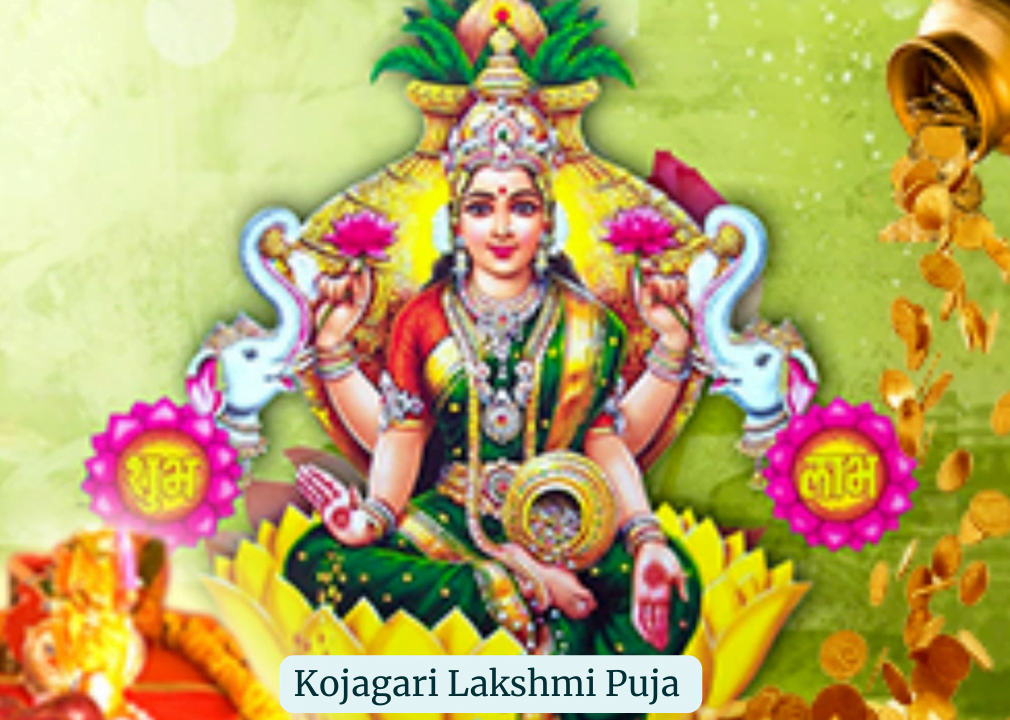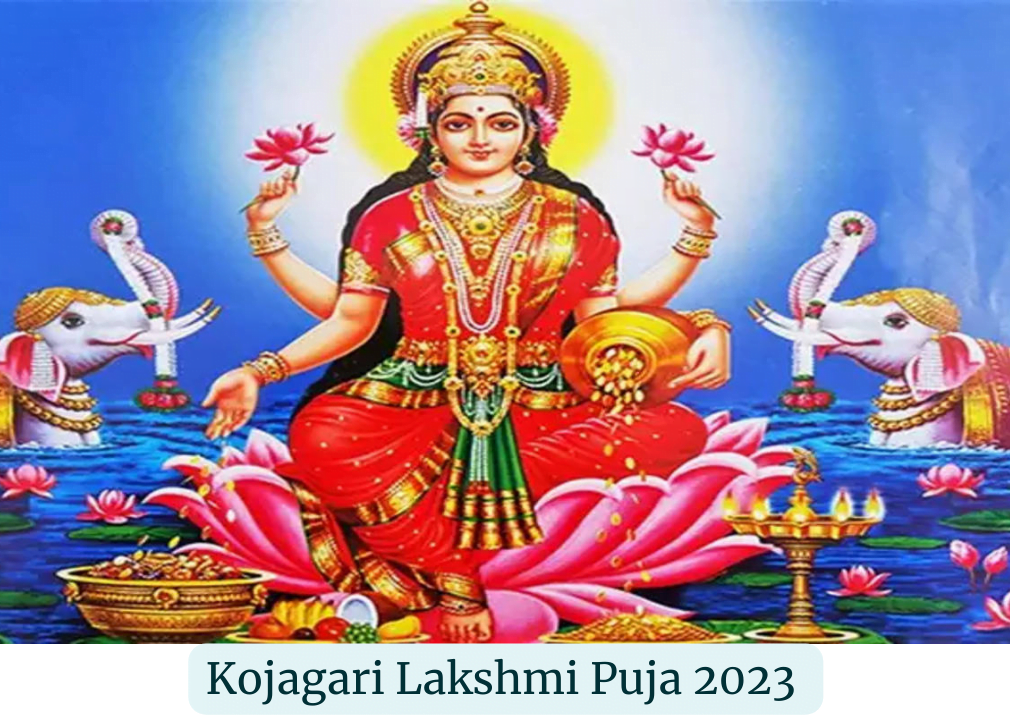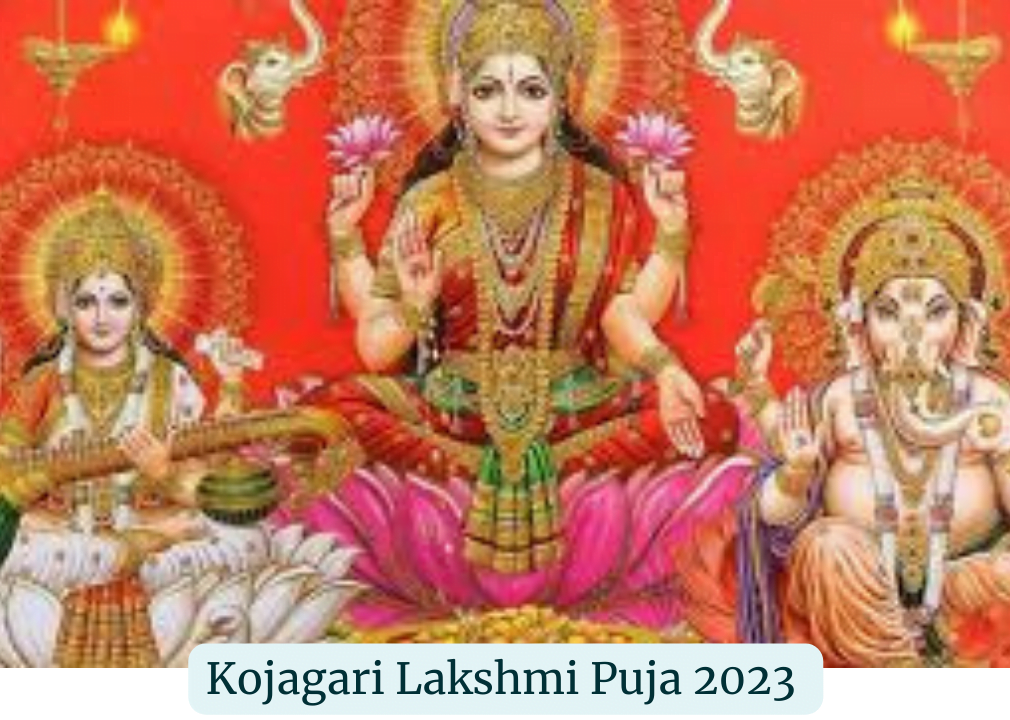Kojagari Lakshmi Puja, which is held on the full moon day of the Hindu month of Ashwin, is also referred to as Sharad Purnima and Bengali Lakshmi Puja. Kojagari Lakshmi Puja will be held in 2023 on October 28 from 10:55 PM to 11:46 PM. The Purnima Tithi starts at 4:17 AM on October 28 and ends at 01:53 AM on October 29 of 2023. The auspicious period lasts for fifty minutes.
Known by many names depending on where you reside, Kojagari Lakshmi Puja is one of the most auspicious days. Some name it Sharad Purnima or Bengali Lakshmi Puja since it falls on the day of the full moon. Devotees perform this puja in an effort to help their families weather hard financial times and provide fortune to them.

Sharad Holiday The Lakshmi Puja Customs
Kojagari Puja often begins with a puja ceremony in the evening, and participants participate in all-night vigils. It is also referred to as Sharad Purnima in various regions of India. It is customary to store kheer (rice pudding) under the moonlight since it is deemed auspicious during the Nishita Kaal, an auspicious period for doing pujas. Different traditions are observed on this occasion in places like Bihar and Bundelkhand.
Some people don’t sleep at all during Nishita Kaal, which represents the attentiveness of the devotees. The term “Kojagara,” which is a combination of the words “Ko” (who) and “Jagara” (awake), refers to someone who stays up all night. After staying up all night, those who complete the puja will be bestowed with the divine blessing of Goddess Lakshmi.
The Kojagari Lakshmi Puja Methods
The Kojagari Lakshmi Puja event includes a number of customs and rituals. Devotees worship Goddess Lakshmi and give prayers at Kojagari Puja. The idol of the deity is placed in dwellings or pandals, which are ephemeral constructions. Kojagari Puja rituals might differ from location to location and throughout religious communities.
Devotees carry out Lakshmi Puja under the supervision of a priest. Devotees present prasad (offerings) such as coconut sweets, fried sweets, jaggery sweets, khichuri (a rice and lentil dish), and other sweets in exchange for Goddess Lakshmi’s heavenly favor. In front of their houses, women make alpana, or decorative decorations, as a representation of Goddess Lakshmi’s steps. It is thought that Goddess Lakshmi makes her way to every household on this day.

Kojagari Lakshmi Puja Ceremonies
In front of their houses, ladies make alpana, or decorative decorations, as a representation of Goddess Lakshmi’s path. It is thought that Goddess Lakshmi makes house visits on this auspicious day, bestowing money and good fortune upon everyone who enter. Devotees remain up all night repeating mantras, singing hymns, and reciting prayers in order to placate the Goddess. To welcome Goddess Lakshmi, devotees burn clay lamps and other illuminations in front of their homes.
Devotees fast on this day, taking only liquids and giving up solid meals. Devotees can break their fast and present Goddess Lakshmi with flattened rice and coconut water after completing all the procedures.

The significance of Kojagari Lakshmi Puja
The worship of Goddess Lakshmi is the focus of Kojagari Puja, which is conducted on the day of the full moon in the Hindu month of Ashwin. States in India including Odisha, West Bengal, and Assam commemorate it with great fanfare and grandeur. The Gregorian calendar states that it takes place in September or October.
Kojagari Purnima, or Bengali Lakshmi Puja, is another name for the day of Lakshmi Puja. It is said that Goddess Lakshmi, also called the Goddess of Prosperity, came to Earth on this day to bestow wealth and health upon all people. In some regions of the country, Kojagari Purnima is also known as Sharad Purnima. It is a big event throughout the central Indian states, especially in Bundelkhand and some areas of Bihar.
Kojagari Puja is performed to appease Goddess Lakshmi. In the Hindu month of Ashwin, there is a night known as the “Night of Awakening” when it is said that Goddess Lakshmi appears to bless her followers. When the puja is performed with complete dedication, the devotees receive the divine blessings of prosperity, fortune, and heavenly grace. Kojagari Utsav and the harvest festival coincide in some northern Indian states.